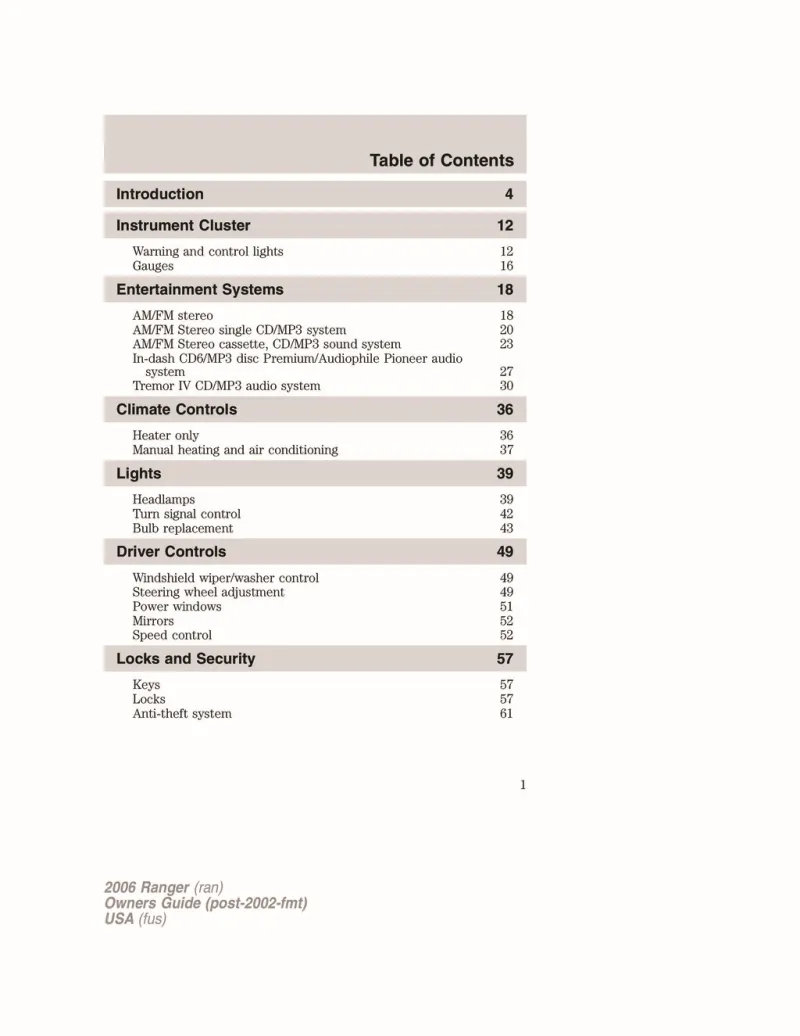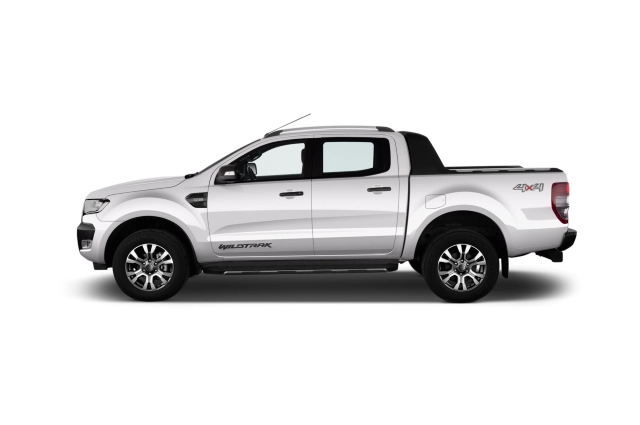2006 Ford Ranger Owner's Manual

Table of Contents
2006 Ford Ranger Overview
Introduction
The 2006 Ford Ranger is a compact pickup truck that perfectly embodies versatility and robustness. Designed for both work and play, it remains a popular choice among those who need a reliable vehicle for daily tasks as well as adventure. With its rugged body style and solid performance, the Ranger provides commendable capability, making it suitable for various driving conditions, whether on the highway or off the beaten path.
Powertrains
Under the hood, the 2006 Ford Ranger offers a selection of powertrains designed for efficiency and power. The base model comes equipped with a 2.3-liter inline-4 engine that delivers 143 horsepower and achieves commendable fuel economy. For those requiring greater power, an optional 4.0-liter V6 engine produces 207 horsepower, making it an excellent choice for towing and off-road adventures. Both engines are paired with either a five-speed manual or a five-speed automatic transmission, providing drivers with smooth and responsive shifts.
Trims
The Ranger is available in several trims, including the XL, XLT, and FX4, each catering to distinct preferences and needs. The XL is the work-ready model, featuring basic amenities, while the XLT adds more comfort with upgraded upholstery, an audio system, and conveniences like air conditioning and power accessories. For off-road enthusiasts, the FX4 trim enhances the Ranger's capabilities with features such as off-road tires, skid plates, and advanced suspension systems, making it well-equipped for rugged terrains.
Features
The 2006 Ford Ranger boasts a variety of features designed for comfort, convenience, and safety. Standard features include an AM/FM radio and optional CD player, while higher trims offer features like keyless entry, cruise control, and alloy wheels. Safety features such as anti-lock brakes and front airbags enhance driver and passenger protection, reflecting Ford's commitment to safety in its vehicles.
Owners Manual
The owner's manual for the 2006 Ford Ranger serves as an invaluable resource, providing detailed information on maintenance routines, operation guidelines, and safety measures. Whether you're performing routine checks or troubleshooting issues, the manual is crafted to enhance the owner's knowledge and ensure the longevity of their Ranger, facilitating a seamless driving experience.
User manual download
The Ford Ranger owner manual for the 2006 model year is to be found in PDF downloadable format on this page. The owner manual for the model year 2006 is free and in English, but the repair manuals are usually not easy to get and may cost more.
Manual Questions
Fill the form below and someone will help you!

